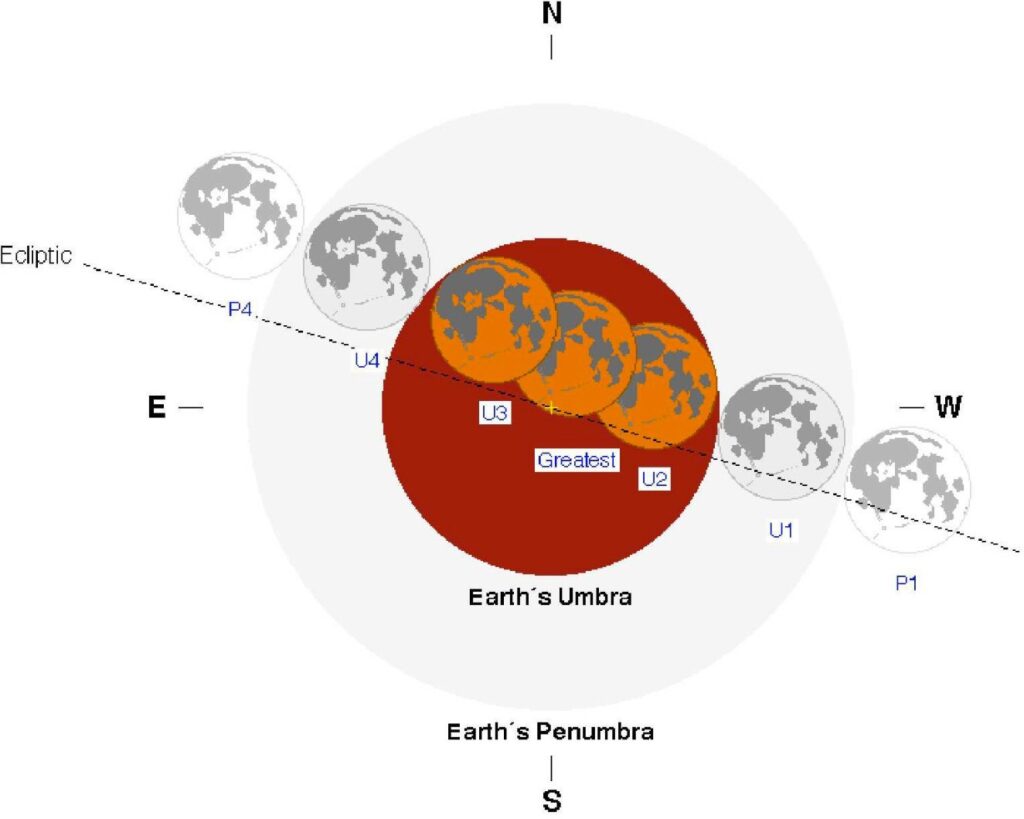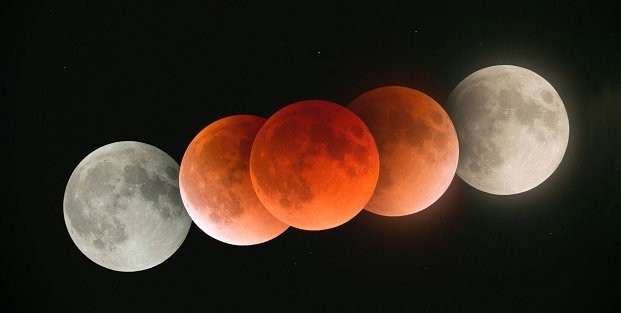On November 8th, the full moon started to change its shape. The size shrunk, and the color was tinted in red. The total lunar eclipse began around 06:09 p.m. and ended at 10:56 p.m. A total lunar eclipse refers to a rare astronomical phenomenon. It is when the sun, earth, and moon are accurately located in a straight line, and the moon disappears under the shadow of the earth and reappears. According to the Korean Astronomy & Space Science Institute, the moon appears red because of the scattered sun’s light that passes through the Earth’s atmosphere and refracts into the moon through the Earth’s atmosphere. Every time a lunar eclipse occurs, the moon’s level of redness is slightly different, which allows the astromers to check the condition of the Earth’s atmosphere.

Image Source: Korean Astronomy&Space Science Institute
Image Source: Korean Astronomy&Space Science Institute It has been about a year and a half since the previous total lunar eclipse on May 26th 2021. In the case of Uranus’ cover, it has been about seven and a half years since it happened in January 25th, 2015. The next total lunar eclipse will be three years later, on September 8th, 2025. Uranus’ cover will not be visible until February 27th, 2068. In Korea, it is said that no two astronomical phenomena can be observed at the same time in the next 200 years.
By. Daniel Ha


